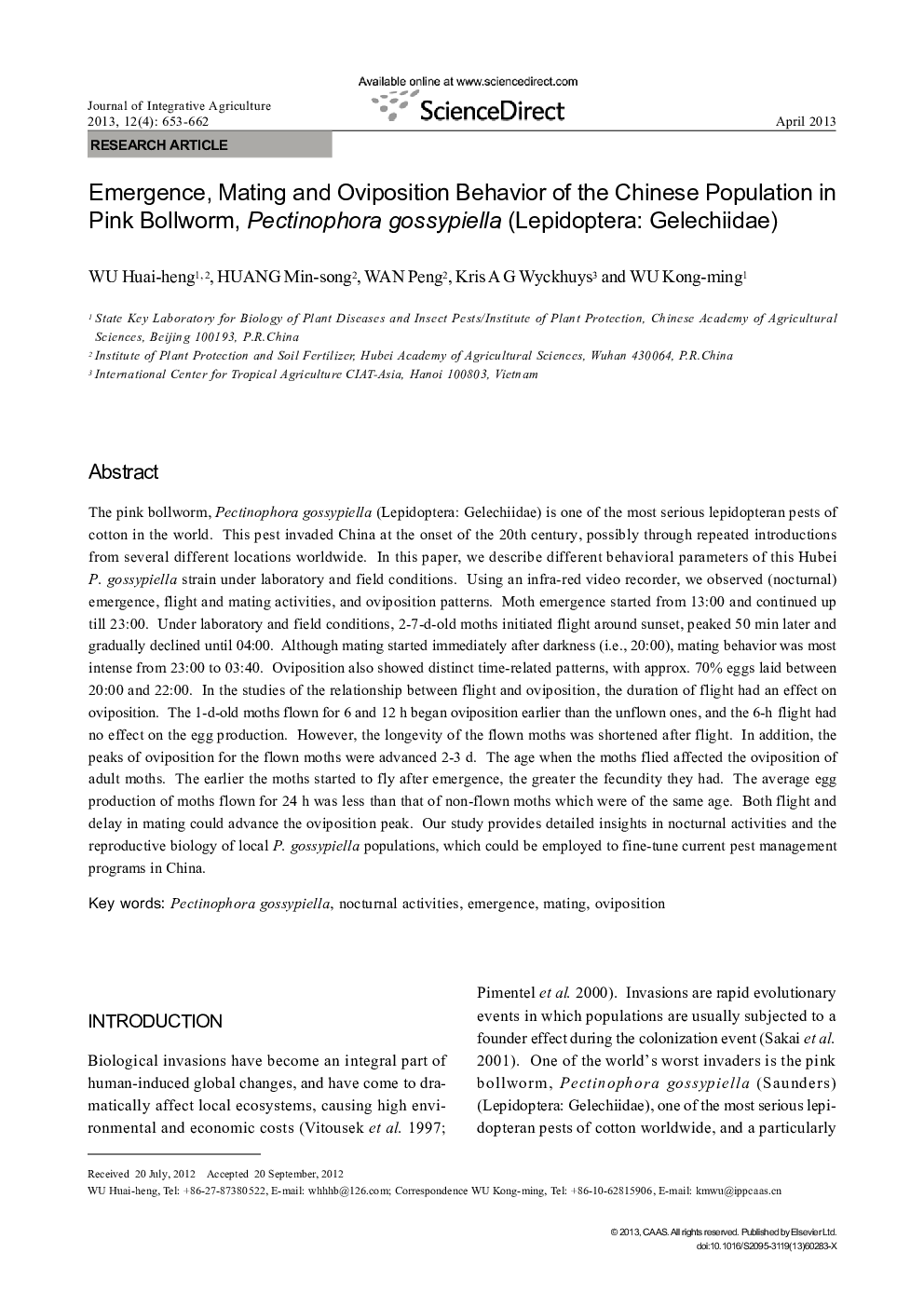| Article ID | Journal | Published Year | Pages | File Type |
|---|---|---|---|---|
| 4495035 | Journal of Integrative Agriculture | 2013 | 10 Pages |
The pink bollworm, Pectinophora gossypiella (Lepidoptera: Gelechiidae) is one of the most serious lepidopteran pests of cotton in the world. This pest invaded China at the onset of the 20th century, possibly through repeated introductions from several different locations worldwide. In this paper, we describe different behavioral parameters of this Hubei P. gossypiella strain under laboratory and field conditions. Using an infra-red video recorder, we observed (nocturnal) emergence, flight and mating activities, and oviposition patterns. Moth emergence started from 13:00 and continued up till 23:00. Under laboratory and field conditions, 2-7-d-old moths initiated flight around sunset, peaked 50 min later and gradually declined until 04:00. Although mating started immediately after darkness (i.e., 20:00), mating behavior was most intense from 23:00 to 03:40. Oviposition also showed distinct time-related patterns, with approx. 70% eggs laid between 20:00 and 22:00. In the studies of the relationship between flight and oviposition, the duration of flight had an effect on oviposition. The 1-d-old moths flown for 6 and 12 h began oviposition earlier than the unflown ones, and the 6-h flight had no effect on the egg production. However, the longevity of the flown moths was shortened after flight. In addition, the peaks of oviposition for the flown moths were advanced 2–3 d. The age when the moths flied affected the oviposition of adult moths. The earlier the moths started to fly after emergence, the greater the fecundity they had. The average egg production of moths flown for 24 h was less than that of non-flown moths which were of the same age. Both flight and delay in mating could advance the oviposition peak. Our study provides detailed insights in nocturnal activities and the reproductive biology of local P. gossypiella populations, which could be employed to fine-tune current pest management programs in China.
